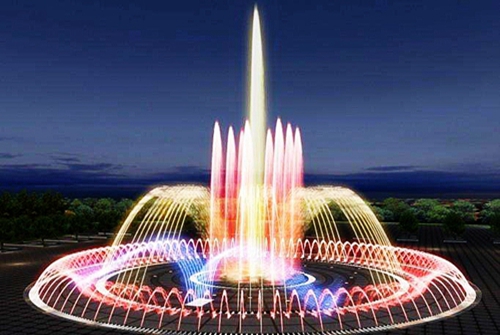Dancing fountains, often seen in public spaces, luxury resorts, and major tourist attractions, are a captivating blend of art, technology, and engineering. These fountains transform ordinary water displays into dynamic performances, choreographed to music and enhanced by vibrant lighting effects. The result is a visual symphony that enchants audiences of all ages and leaves a lasting impression.
The Magic Behind Dancing Fountains
The concept of a dancing fountain revolves around the synchronization of water jets with music and lights. At the heart of this mesmerizing spectacle are powerful pumps, intricate plumbing systems, and advanced computer software that controls every aspect of the fountain's operation.
High-tech pumps propel water through nozzles, creating jets that can be precisely manipulated to move in time with a musical score. The water jets can vary in height, direction, and speed, creating a dynamic range of effects—from gentle arcs to towering spouts. The nozzles, often programmable, are designed to produce different shapes, such as fans, spirals, or misty clouds, adding to the fountain's visual complexity.
Lighting plays a crucial role in enhancing the visual appeal of dancing fountains. Strategically placed LED lights, often capable of displaying a wide spectrum of colors, illuminate the water jets. As the water moves, the lights change color and intensity, creating a stunning interplay of light and shadow that amplifies the overall effect.
The music accompanying a dancing fountain show is carefully selected to match the mood and theme of the performance. Whether it's a classical piece, a modern pop song, or a cinematic score, the music sets the tone and pace for the water choreography. Advanced software ensures that the water jets move in perfect harmony with the beat, rhythm, and melody of the music, turning the fountain into a living, dancing entity.
Iconic Dancing Fountains Around the World
Dancing fountains have become iconic landmarks in many cities around the world, attracting millions of visitors each year. One of the most famous is the Dubai Fountain, located at the base of the Burj Khalifa, the world's tallest building. The Dubai Fountain stretches over 900 feet and features water jets that shoot up to 500 feet in the air. The fountain's performances, set to a diverse range of music, from classical to contemporary, draw large crowds every evening.
Another renowned dancing fountain is the Bellagio Fountain in Las Vegas. This fountain, situated in front of the Bellagio Hotel and Casino, is a symbol of the city's vibrant entertainment scene. The Bellagio Fountain's shows, which run every 15 to 30 minutes, are synchronized to a mix of popular songs, classical music, and opera, creating a breathtaking experience for spectators.
In Barcelona, the Magic Fountain of Montjuïc is a historical example of a dancing fountain that continues to dazzle visitors. Built in 1929 for the Barcelona International Exposition, this fountain offers a colorful display of water, light, and music. The Magic Fountain is particularly famous for its nighttime shows, where the illuminated water jets dance to the tunes of classical music, Spanish guitar, and even contemporary pop hits.
The Cultural and Social Impact
Dancing fountains are more than just technological marvels; they are cultural icons that bring communities together. These public spectacles serve as gathering points for locals and tourists alike, fostering a sense of shared wonder and enjoyment. The performances often reflect the culture and spirit of the place, making them unique expressions of local identity.
Moreover, water fountain manufacturers have a significant economic impact, boosting tourism and contributing to the local economy. They are often key attractions in cities, drawing visitors who come specifically to witness these magnificent shows.






Comments